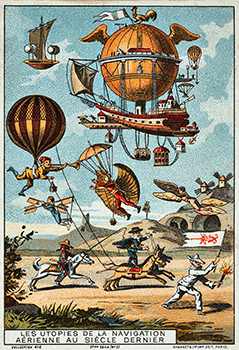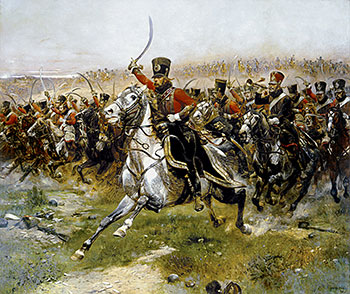
Movement data is going to transform everything
The O'Reilly Radar Podcast: Rajiv Maheswaran on the science of moving dots, and Claudia Perlich on big data in advertising.
Subscribe to the O’Reilly Radar Podcast to track the technologies and people that will shape our world in the years to come.
In this week’s Radar Podcast episode, O’Reilly’s Mac Slocum chats with Rajiv Maheswaran, CEO of Second Spectrum. Maheswaran talks about machine learning applications in sports, the importance of context in measuring stats, and the future of real-time, in-game analytics.
Here are some highlights from their chat:
There’s a lot of parts of the game of basketball — pick and rolls, dribble hand-offs — that coaches really care about, about analyzing how it works on offense, how to guard them. Before big data and machine learning, people basically watched the games and marked them. It turns out that people are pretty bad at marking them accurately, and they also miss a ton of stuff. Right now, machine learning tells coaches, ‘This is how many pick and rolls these two players have had over the course of the season, how often they do all the different variations, what they’re good at, what they’re bad at.’ Coaches can really find tendencies that can help them play offense, play defense, far more efficiently, based off of machine learning.
What we’re doing is having the machine match human intuition. If I’m watching a game, I know that the shot is harder if I’m farther away, if I have multiple defenders, if they’re close, if they’re closing in on me, if I’m dribbling, the type of shot I’m taking. As a human, I watch this and I have an intuition about it. Now, by giving all that data to the machine, it can make a predictor that actually matches our intuition, and goes beyond it because it can put a number onto what our intuition tells us.

How virtual reality can make the real world a better place
Can VR become “the ultimate empathy machine?”
 Virtual reality (VR) can make the impossible possible — the rules of physical reality need no longer apply. In VR, you strap on a special headset and leave the real world behind to enter a virtual one. You can fly like a bird high above Manhattan, or experience the feeling of weightlessness as an astronaut on a spaceship.
Virtual reality (VR) can make the impossible possible — the rules of physical reality need no longer apply. In VR, you strap on a special headset and leave the real world behind to enter a virtual one. You can fly like a bird high above Manhattan, or experience the feeling of weightlessness as an astronaut on a spaceship.
VR is reliant upon the illusion of being deeply engrossed in another space and time, far away from your current reality. In a split second you can travel to exotic locales or be on stage at a concert with your favourite musician. Gaming and entertainment are natural fits for VR experiences. A startup called The Void plans to open a set of immersive virtual reality theme parks called Virtual Entertainment Centers, with the first one opening in Pleasant Grove, Utah by June 2016.
This is an exciting time for developers and designers to be defining VR as a new experience medium. However, as the technology improves and consumer hardware and content become available in VR, we must ask: how can this new technology be applied to benefit humanity?
As it turns out, this question is being explored on a few early fronts. For example, SnowWorld, developed at the University of Washington Human Interface Technology (HIT) Lab in 1996 by Hunter Hoffman and David Patterson, was the first immersive VR world designed to reduce pain in adults and children. SnowWorld was specifically developed to help burn patients during wound care. Read more…

Transforming the experience of sound and music
The O'Reilly Radar Podcast: Poppy Crum on sensory perception, algorithm design, and fundamental changes in music.
Subscribe to the O’Reilly Radar Podcast to track the technologies and people that will shape our world in the years to come.
In this week’s Radar Podcast, author and entrepreneur Alistair Croll, who also co-chairs our Strata + Hadoop World conference, talks music science with Poppy Crum, senior principal scientist at Dolby Laboratories and a consulting professor at Stanford.
Their wide-ranging discussion covers fundamental changes in the music industry, sensory perception and algorithm design, and what the future of music might look like.
Here are a few snippets from their conversation:
As we see transformations to the next stage of how we consume content, things that are becoming very prevalent are more and more metadata. More and more information about the sounds, information about personalization. You aren’t given the answer; you’re given information and opportunities to have a closer tie to the artist’s intent because more information about the artist’s intent can be captured so that when you actually experience the sound or the music, that information is there to dictate how it deals with your personal environment.
Today, Dolby Atmos and other technologies have transformed [how we experience sound in the cinema] quite substantially, where if I’m a mixer, I can take a sound and can mix now, say, instead of seven channels, I can mix 128 sounds, and each one of those sounds has a data stream associated with it. That data stream carries information. It’s not going to a particular set of speakers; it has x, y, z coordinates, it has information about the diffusivity of that sound. Read more…
On leadership
Dinner conversation turns into a career retrospective. Food for thought for leaders and leaders-to-be.
Toss Bhudvanbhen co-authored this post.
Over a recent dinner, my conversation with Toss Bhudvanbhen meandered into discussion of how much our jobs had changed since we entered the workforce. We started during the Dot-Com era. Technology was a relatively young field then (frankly, it still is) so there wasn’t a well-trodden career path. We just went with the flow.
Over time our titles changed from “software developer,” to “senior developer,” to “application architect,” and so on, until one day we realized that we were writing less code but sending more e-mails. Attending fewer code reviews but more meetings. Less worried about how to implement a solution, but more concerned with defining the problem and why it needed to be solved. We had somehow taken on leadership roles.
We’ve stuck with it. Toss now works as a principal consultant at Pariveda Solutions and my consulting work focuses on strategic matters around data and technology.
The thing is, we were never formally trained as management. We just learned along the way. What helped was that we’d worked with some amazing leaders, people who set great examples for us and recognized our ability to understand the bigger picture.

Training in the big data ecosystem
The O'Reilly Radar Podcast: Paco Nathan and Jesse Anderson on the evolution of the data training landscape.
Subscribe to the O’Reilly Radar Podcast to track the technologies and people that will shape our world in the years to come.
 In this week’s Radar Podcast, O’Reilly’s Ben Lorica talks to Paco Nathan, director of O’Reilly Learning, and Jesse Anderson, technical trainer and creative engineer at Confluent.
In this week’s Radar Podcast, O’Reilly’s Ben Lorica talks to Paco Nathan, director of O’Reilly Learning, and Jesse Anderson, technical trainer and creative engineer at Confluent.
Their discussion focuses on the training landscape in the big data ecosystem, their teaching techniques and particular content they choose, and a look at some expected future trends.
Here are a few snippets from their chat:
Training vs PowerPoint slides
Anderson: “Often, when you have a startup and somebody says, ‘Well, we need some training,’ what will usually happen is one of the software developers will say, ‘OK, I’ve done some training in the past and I’ll put together some PowerPoints.’ The differences between a training thing and doing some PowerPoints, like at a meetup, is that a training actually has to have hands-on exercises. It has to have artifacts that you use right there in class. You actually need to think through, these are concepts, these are things that the person will need to be successful in that project. It really takes a lot of time and it takes some serious expertise and some experience in how to do that.”
Nathan: “Early on, you would get some committer to go out and do a meetup, maybe talk about an extension to an API or whatever they were working on directly. If there was a client firm that came up and needed training, then they’d peel off somebody. As it evolved, that really didn’t work. That kind of model doesn’t scale. The other thing too is, you really do need people who understand instructional design, who really understand how to manage a classroom. Especially when it gets to any size, it’s not just a afterthought for an engineer to handle.” Read more…

Improving Uber’s surge pricing
Should algorithmic pricing be the norm rather than the exception?

Request an invitation to Next:Economy, our event aiming to shed light on the transformation in the nature of work now being driven by algorithms, big data, robotics, and the on-demand economy.
Companies want a bigger share of the pie than their competitors, capital wants a bigger share than labor (and labor wants right back), countries want a bigger share than their rivals, but true wealth comes when we make a bigger pie for everyone. Well run markets are a proven way to do that.
Surge pricing is one of Uber’s most interesting labor innovations. Faced with the problem that they don’t have enough drivers in particular neighborhoods or at particular hours, they use market mechanisms to bring more drivers to those areas. If they need more drivers, they raise the price to consumers until enough drivers are incented by the possibility of higher earnings to fill the demand. Pricing is not set arbitrarily. It is driven algorithmically by pickup time — the goal is to have enough cars on the road that a passenger will get a car within 3–5 minutes. (Lyft’s Prime Time pricing is a similar system.) Uber keeps raising the price until the pickup time falls into the desired range.
This is clearly an imperfect system. In one case, surge pricing gouged customers during a crisis, and even in more prosaic situations like bad weather, the end of a sporting event, or a holiday evening, customers can see enormous price hikes. This uncertainty undercuts the fundamental promise of the app, of cheap, on-demand transportation. If you don’t know how much the ride will cost, can you rely on it?


